Visiting CERN – What is the universe made of?
In the course of a trip through France and Switzerland, I recently visited Geneva. This was mainly influenced by my visit to CERN, which is why I will dive a little into the world of physics here. So here follows an insight into the largest scientific project in the field of particle physics.
Even before our arrival in Geneva we wanted to register for a guided tour of CERN. But not a chance. All tours in the near future were fully booked.
But no matter, according to many recommendations, it should also be very worthwhile to look at the two free exhibitions.
Just a few minutes by bus and you are already in front of the building of the European Organization for Nuclear Research, which is located directly in front of the idyllic mountain scenery of the Jura Mountains. On clear days you can also see the Mont Blanc from here.
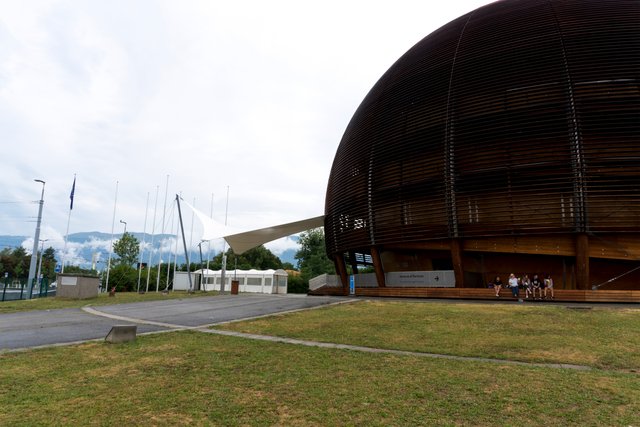
With 574 buildings on an area of almost 200 hectares, it looks more like a huge university campus. [4]
After visiting the exhibitions, which are both free and really interesting, we didn't want to miss the chance to be part of a guided tour.
According to the motto 'There's no harm in asking' we were actually lucky enough to get a guided tour through the research center. And it was really worth seeing!
If many of you are wondering what CERN actually is and what is happening there, here is an explanation and a little insight into the world of particle physics.
CERN - the starting point for the end of the world?
Cern is the world's largest research centre for nuclear research and it was previously thought that researchers here could destroy the world with their experiments. More precisely, the LHC, the Large Hadron Collider, the world's largest particle accelerator, which went into operation in 2009.
They warned against the formation of black holes that could devour the earth completely. But the physicists reassured us that this is not possible and even today, after countless experiments, the world has survived everything undamaged. [3]
When you enter the area, you quickly realize that everything here revolves around physics. The surrounding streets are named after important scientists and Nobel Prize winners, and physical formulas of all kinds, such as the monument "Wandering the Immeasurable", can be found everywhere.
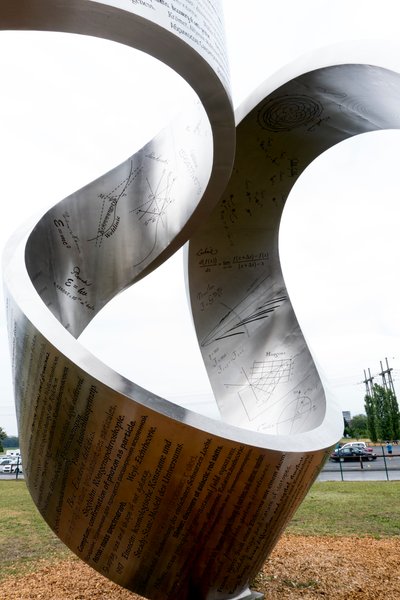
Although everything seems so calm and idyllic, earth-shattering experiments are carried out here. The researchers deal with the smallest things that can be observed in our world and try to find out more about the particles that reveal something about the structure of matter. The LHC was built for this purpose. It is located at a depth of about 100 m in the border area between France and Switzerland and is 27 km long. The task of the LHC is to find out more about the building blocks of matter and the past of our universe. [4]
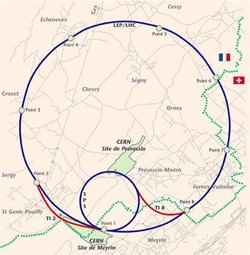
Source © 2001-2018 CERN: LINK
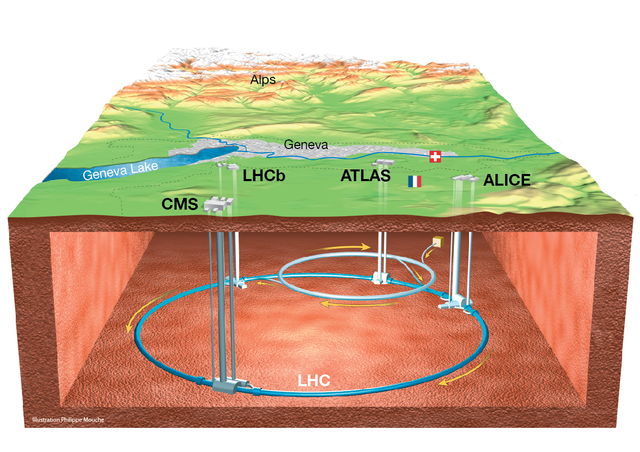
Source © 2008-2018 CERN: LINK
What does the term matter actually mean?
All galaxies, planets, stars, everyday things in our lives and also we humans consist of matter. This in turn basically consists of only three types of particles: the positively charged protons, the electrically charged neutrons and the negatively charged electrons. Protons and neutrons form the atomic nucleus, and the electrons form the shell. The different chemical elements result from different numbers of protons in the nucleus and the electrons connect the atoms to crystals or biomolecules.
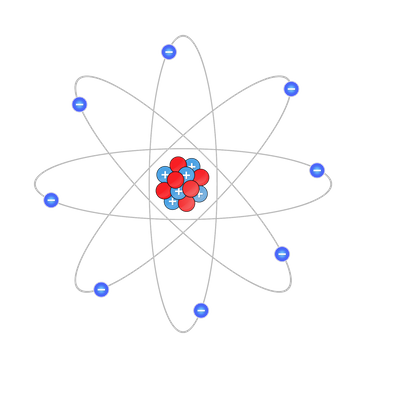
Matter is held together by the four forces of nature. The gravity that we experience on Earth as gravity. At the atomic level, the electromagnetic force dominates between positively charged atomic nuclei and negatively charged electrons.
We also know that protons and neutrons, collectively called nucleons, are themselves composed of elementary particles, the quarks. At this nuclear level, another force acts: the so-called weak interaction, which holds both the nucleons together and the quarks in the nucleons.
But the last force, the so-called strong force, is still a mystery to physicists.
The strong force is mediated by the exchange of particles, the gluons. These gluons connect the quarks and there are astonishing consequences: the smaller the distance between the quarks, the smaller the attracting force. However, if the distance is large, the force between them is also very large.
The quarks can therefore never occur in isolation, one speaks of Confinement. This property distinguishes quarks from all other particles and gives rise to another mysterious phenomenon: A nucleon is heavier than the sum of its components![1]
So the question arises how the mass of the nucleons arises and where it comes from. This is exactly what the researchers at CERN are trying to find out.
The LHC - Reconstruction of the Big Bang
So back to the Large Hadron Collider at CERN. In order to find out more about the structure of matter and the particles associated with it, the scientists let two particle beams circle in the 27 km long ring at almost the speed of light and collide at four stations - with more energy than has ever been achieved in another accelerator. If a collision now occurs, states such as shortly after the Big Bang arise and it becomes many times hotter in a minimum of space than inside the sun. At four detectors (ALICE, ATLAS, LHCb, CMS) the collisions are reconstructed and various data are evaluated.
Magnets were used to keep the particles on their path, the strongest magnets ever produced. They operate at approx. 13,000 amperes - so the magnetic cables transport electricity equivalent to that of more than 10,000 households!
The cables are cooled down to minus 271.5 degrees Celsius, a temperature below that of space, so that the current can flow without loss.
One of the detectors is the ATLAS detector. It is 25 m high and weighs like the Eiffel Tower. It works like a large camera and records the decay of the particles and their trace - with an accuracy of 50 micrometers (corresponds to the diameter of a hair). [3]
Questions about questions
The detectors were used to detect a large number of previously unknown particles in acceleration experiments. Therefore, over 30 years a theory based on the laws of special relativity theory and quantum theory has gradually emerged, and today is called "standard model of particles and interactions".
But although this standard model can explain almost all previous observations of particle physics, it is still not enough to describe our world completely. On the one hand, it is not able to unite the three basic forces (strong interaction, weak interaction, electromagnetic force) in a single theory.
On the other hand, there is another problem with the standard model, which I have already mentioned above: From what does the mass of the particles result now?
The particles, which the theory has already predicted, should not actually have any mass. However, this does not correspond at all to the observations in which many of the particles were detected with mass. The explanation for this could be solved by the Higgs boson. [2]
2012 - A new particle comes into play
In 2012, the researchers celebrated their greatest success to date - a particle that had already been predicted many years earlier but could not be proven - up to now!
This is the so-called Higgs boson. Its mass has been demonstrated experimentally with the LHC. But that was not quite the solution to the problem of missing mass but today many models exist, which are based on the foundations of the standard model or extend it by additional dimensions. These make it possible, for example, to unite the three basic forces. [2] But which of the models best describes nature and how does the mass really come about?
All this is not yet quite clear and must be measured experimentally. With the LHC, physicists have at least gained access to a previously unknown energy range and thus have the possibility to confirm or refute many theories.
Only five percent of space consists of visible matter. The rest is composed of so-called dark matter and dark energy. 2] The future of particle physics therefore holds many surprises and discoveries and above all many new questions!
Albert Einstein said, for good reason:

I guess he was right about that.
I hope I have been able to teach you a little bit about the basics of the physical experiments that are being carried out at CERN. Of course I only scratched the surface, because the topic of particle physics is much more complex!
A visit to CERN should not be missed if you have the opportunity!
The exhibitions and above all the guided tour are totally exciting and absolutely recommendable!
Sources:
[1] https://www.weltderphysik.de/gebiet/teilchen/bausteine/aufbau-der-materie/
[2] http://www.lhc-facts.ch/index.php?page=home
[3]https://www.stern.de/panorama/wissen/kosmos/groesster-teilchenbeschleuniger-lhc-der-riese-ruht-3371120.html
[4] https://de.wikipedia.org/wiki/CERN
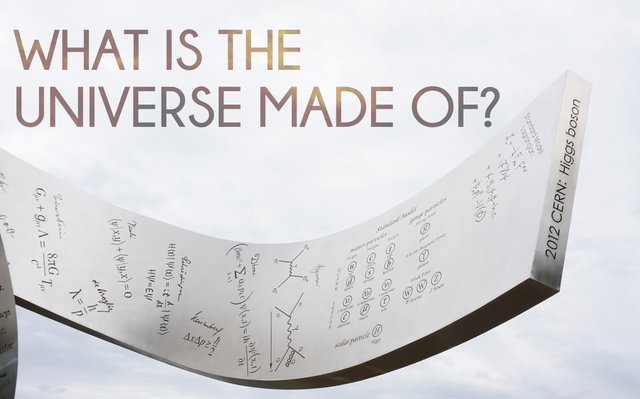
It seems that you changed the image. The giphy image seems to come from viceland so I don't think it has a re-use license.
Nice post :)
For a number of your images it is not clear if they have the right copyright license for re-use. You might want to check that and add a link to the corresponding license. Alternatively, you can use sites like pixabay which offer images which can be used for reuse in a commercial setting.
Quite a good post covering all the relevant stuff! Thanks for your efforts.
Thank you! ☺️
Servus,
du hast von mir ein Upvote erhalten! Ich bin ein Curation-Bot und meine Mission ist, hochwertigen Content unter #steemit-austria zu fördern. Hier kannst du mehr über mich und meine Funktionsweise erfahren. Wie du an meinen Curation-Rewards mitverdienen kannst, wird dort ebenfalls beschrieben.
Übrigens: Wenn du den Tag #steemit-austria verwendest, finde ich deine Posts noch leichter!
Auf dem dem Steemit-Austria Discord-Server kannst du nette Leute kennen lernen und deine Beiträge promoten.
Zum aktuellen Tagesreport
Science, cycling and photography?! Wow, I must click "follow"
Thank you! Then I hope you like some of my posts! :)
;)
hiiii
Nice post
Thanks :)
Congratulations @moreaboutmarina! You have completed the following achievement on Steemit and have been rewarded with new badge(s) :
Click on the badge to view your Board of Honor.
If you no longer want to receive notifications, reply to this comment with the word
STOPTo support your work, I also upvoted your post!
This post has been voted on by the steemstem curation team and voting trail.
There is more to SteemSTEM than just writing posts, check here for some more tips on being a community member. You can also join our discord here to get to know the rest of the community!